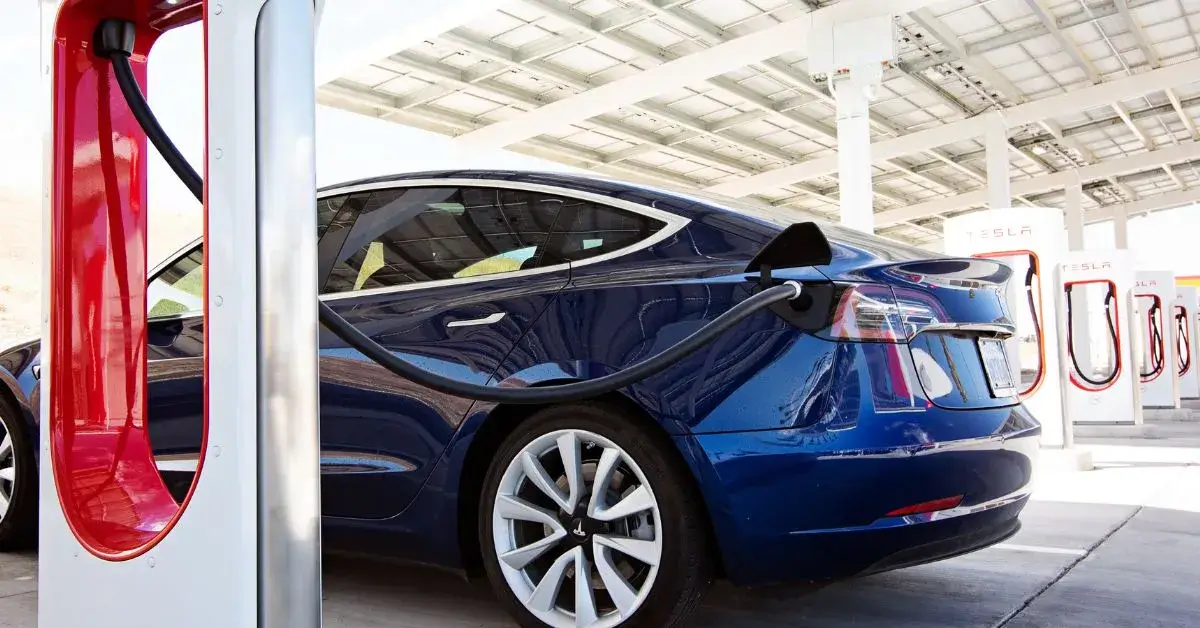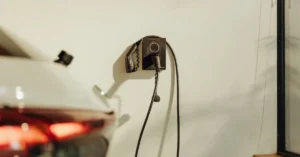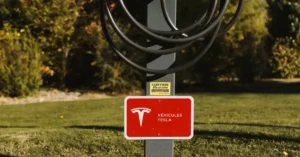Wondering how to check Tesla battery health is a common objection among people who drive a lot with their Tesla’s. Let’s get this question answered today!
Table of Contents
Tesla is known for its innovative and advanced electric vehicle technology and battery systems. Proper maintenance and monitoring of the battery’s health is crucial for ensuring a Tesla vehicle’s longevity and optimal performance.
In this article, we will provide a comprehensive guide on checking your Tesla battery’s health. Whether through the Tesla app, the vehicle’s touchscreen, or other methods, we’ll cover all the essential steps you need to take to stay informed about the health of your battery.
How To Check Tesla Battery Health?
There are several ways of how to check battery health of a Tesla vehicle:
- Tesla App: The Tesla app provides real-time information about your vehicle’s battery health, including the current state of charge and the number of charge cycles. To check battery health through the app, download and install the app, log in to your Tesla account, select your vehicle, and go to the “Battery” section.
- Touchscreen Display: You can also check the battery’s health through the vehicle’s display. To access this information, turn on the car and go to the “Settings” menu, then select “Vehicle” and “Battery.”
- Third-party software and tools: There are several third-party software and tools available that can be used to monitor the health of your Tesla battery, including TeslaFi, Teslascope, and EV Trip Optimizer.
- Physical inspection of the battery: Regularly inspecting the physical condition of your battery can also help you assess its health. Check for any signs of physical damage, such as cracks or dents, and monitor the battery’s temperature.
How Long Do Tesla Batteries Last?
According to Tesla’s 2021 impact report, its batteries are designed to last the vehicle’s life, which the company estimates as roughly 200,000 miles in the U.S. and 150,000 miles in other countries.
However, Tesla (and Elon Musk) claims its EV batteries can last between 300,000 and 500,000 miles. Data collected by research firm NimbleFins seems to back this up — a study of 557 Tesla vehicles conducted by the company showed an average of 90% battery capacity even with 150,000 miles on the odometer.
Understanding Tesla’s Battery Health
A charge cycle refers to one complete discharge and recharge of the battery. As the number of charge cycles increases, the battery’s capacity will gradually decrease. The current state of charge (SOC) of the battery indicates the amount of energy stored in the battery, expressed as a percentage of the total capacity. A higher SOC means that the battery has more energy stored and a lower SOC means less energy is available.
The temperature of the battery also affects its health. Excessive heat or cold can cause battery degradation, leading to a decrease in capacity and range. Keeping the battery within an optimal temperature range, typically between 20-30°C, is essential to ensure proper functioning and extend its lifespan.
By regularly monitoring these factors and understanding what they mean, you can better assess the health of your Tesla battery and take steps to improve it if necessary. Lets get you answers to how to check Tesla battery health
How to check Tesla battery health through the Tesla App

One of the easiest ways to check the health of your Tesla battery is through the Tesla app. This app provides a convenient way to access real-time information about your vehicle, including battery health. Here’s how to check the tesla battery health of your Tesla through the app:
- Download and install the Tesla app on your mobile device if you haven’t already done so.
- Log in to your Tesla account using your email and password.
- Select your vehicle from the list of connected cars.
- Go to the “Battery” section on the app’s dashboard.
- Here you’ll see a display of the battery health information, including the current state of charge and the number of charge cycles.
The battery health information displayed on the Tesla app is updated in real-time to get an accurate and up-to-date assessment of your battery’s health. In addition, the app provides recommendations on how to maintain and improve your battery’s health, such as by avoiding rapid charging and keeping the battery at a moderate temperature.


How to check Tesla battery health through the Touchscreen
In addition to the Tesla app, you can also check the battery health of your Tesla vehicle through the touchscreen display. This information is available in the vehicle’s settings menu and provides a quick and easy way to assess the battery’s health. Here’s how to check Tesla battery health through the main Touchscreen:
- Turn on your Tesla vehicle and wait for the touchscreen display to load.
- Tap on the “Settings” icon on the bottom bar of the touchscreen.
- Scroll down and select “Vehicle.”
- Scroll down and choose “Battery.”
- Here you’ll see a display of the battery health information, including the current state of charge, the number of charge cycles, and the battery’s temperature.
The battery health information displayed on the touchscreen is updated in real-time to get an accurate and up-to-date assessment of your battery’s health. By regularly checking the battery health through the touchscreen, you’ll be able to stay informed about the current state of your battery and take steps to maintain or improve it as needed.
Note: The information displayed on the touchscreen may vary depending on the model and year of your Tesla vehicle. Consult your owner’s manual or Tesla’s website for more information.
Other Ways of how to check Tesla battery health
How to check Tesla battery health in addition to the Tesla app and touchscreen display? There are other ways to check the battery health of your Tesla vehicle. These include:
- Third-party software and tools: Several third-party software and tools can be used to monitor the health of your Tesla battery. These tools can provide detailed information about the battery’s capacity, state of charge, and other key metrics. Some popular options include scan my Tesla, TeslaFi, Teslascope, and EV Trip Optimizer.
- Physical inspection of the battery: Regularly inspecting the physical condition of your battery can also help you assess its health. Check for any signs of physical damage, such as cracks or dents, and monitor the battery’s temperature. If you notice any unusual signs, it’s recommended to have your battery inspected by a Tesla specialist.
FAQ
How quickly do Tesla batteries degrade?
Tesla batteries have an average lifespan of 300,000 to 500,000 miles or 1,500 cycles. According to reports, there is an initial drop in the first few months, and then the rate of deterioration slows. Real-world data shows Tesla battery depreciation was less than 10% after 160,000 km.
How do I check my Tesla battery history?
Tracking a Tesla’s mileage and battery capacity over time is the most straightforward approach to checking its battery health. Owners can do this themselves by pressing on ‘Battery,’ selecting ‘Range,’ and entering in the section ‘loss of range’ on the Tesla mobile app.
Additionally, ensure the Tesla app is correctly connected to the car before clicking on service, requesting charge metrics, and viewing the vehicle’s monthly or yearly charging history.
Is it OK to charge Tesla every day?
It is typically safe to charge a Tesla every day. However, it is advised to avoid charging the battery to full charge too frequently as this can harm the lithium-ion battery cells. A battery based on lithium-ion cells should be charged between 80-90%.
However, if you have a LFP battery, they are more durable and can handle deeper discharges and higher charges without much degradation, making it generally safe to charge them to 100%.
Daily charging at slower rates, however, can boost the range available at the start of each day and preserve the overall health of your battery.
What is the price to replace a Tesla battery?
Depending on the model and the battery size and if the EV is under warranty it can cost around $160/kWh (+labour costs). Elon Musk has stated that changing battery modules cost between $5,000 and $7,000, while a Tesla invoice shares on social media obtained by Current Auto and users shows that a total battery replacement costs between $12,000 and $17,000.
Is it OK to leave Tesla plugged in for weeks?
It is usually safe to leave a Tesla plugged in for several weeks. If there are no power interruptions, the onboard computer will prevent overcharging and the battery will remain at the same charge %.
How do you check the efficiency of a Tesla battery?
One way to check the efficiency of a Tesla battery is to use a meter that tells you how many kWh it takes to charge the battery versus how many kWh you get back. Another way is to use an app to monitor battery health and range over time.
How to check Tesla battery health on my Tesla app?
To check the battery on your Tesla app, open the app and tap on “Service,” then “Request Service.” Next, tap on “Battery,” select “Range,” and type in “loss of range” when asked to describe the problem. Tap “Next,” and the app will run a self-diagnosis to check your battery health.
How do I know when my Tesla battery needs replacing?
There is no set rule for when a Tesla battery needs replacing, as it depends on usage, charging habits, and environmental conditions. The is a smart EV and tells f something is not ok. If this happens we recommend you to reach out to Tesla Service.
However, you are the intelligent user and controller of the EV, so if you notice a significant decrease in range or performance, it may be a sign that your battery or Vehicle needs some attention.
If you liked this blog article about the question: How To Check Tesla Battery Health, don’t forget to leave us a comment down below to tell us about your experience.





